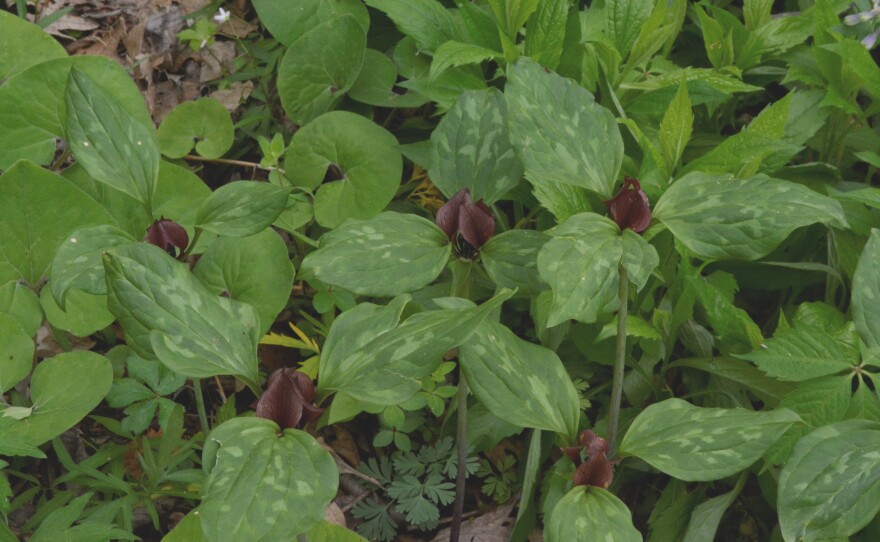Walking along Shady Hollow Trail at Comlara Park, Sherrie Snyder spots a small flowering plant in the underbrush that contains a series of delicate deep purple blossoms. She stoops to snap a photograph of it on her cell phone.
"I'm going take a picture of this little guy, the dwarf larkspur," she says.
It's all part of a citizen-science project called Flora of Comlara Park. She and other volunteers—you might call them plant Sherlocks—observe and photograph the current plant life so that botanists can compare the plants growing today with those that grew a hundred years ago in central Illinois.
Snyder uses a free mobile app called iNaturalist that records the date and location of the plant and then uploads the photograph to a central data base. Through iNaturalist, botanists from across the country will have a chance to view her plant findings.
In addition to plants at Comlara Park, Snyder is also documenting the flora on her own property in Woodford County.
The presence of some plants and the disappearance of others can reveal a great deal about how the natural world is changing.
"One thing it tells us is how our environment is changing and what effects we might be having on the environment," Snyder said.
"Some plants are more conservative than others. They need a stable environment and are the first ones to go when the environment is disrupted. Other plants are a little easier, they will adapt to just about anything."
The Comlara survey is also helping botanists keep track of the spread of invasive plants. These non-native plants tend to bloom and leaf out earlier in the spring, shading the ground and making it difficult for any other plants to grow nearby.
The Comlara plant survey is being overseen by Joe Armstrong, a retired botany professor at Illinois State University. Armstrong said special training isn't necessary to participate -- only an appreciation of plant life.
Snyder is a former systems analyst at State Farm, who majored in biology as an undergraduate at Illinois State. She says she has been interested in the natural world since she was a child.
"My Dad and I would take long walks. He knew the names of flowers," Synder said. She is also a member of the Wild Ones, an organization dedicated to preserving and expanding the planting of native plants in Illinois.
Flowering plants are plentiful in locations like Comlara Park, especially at this time of year when colorful spring ephemerals are in bloom. In addition to dwarf larkspur, Snyder has documented wild leek, blood root, prairie trillium and Jacob's ladder, among other spring flowers.
The hard part isn't finding flowering plants, she said. "The hard part is trying to figure out what some of them are." Fortunately there are numerous flower guides and phone apps to help identify Illinois flora.
Besides providing important research, a walk in the woods is also a therapeutic experience, Snyder says—a time to breathe in the scent of fresh grass and hear the musical calls of spring migrating birds.
"This is a wonderful area to have set aside for people to enjoy," she said of the trails and prairie at Comlara. "This area has lot of plants you can't see everywhere."
WGLT depends on financial support from users to bring you stories and interviews like this one. As someone who values experienced, knowledgeable, and award-winning journalists covering meaningful stories in central Illinois, please consider making a contribution.








